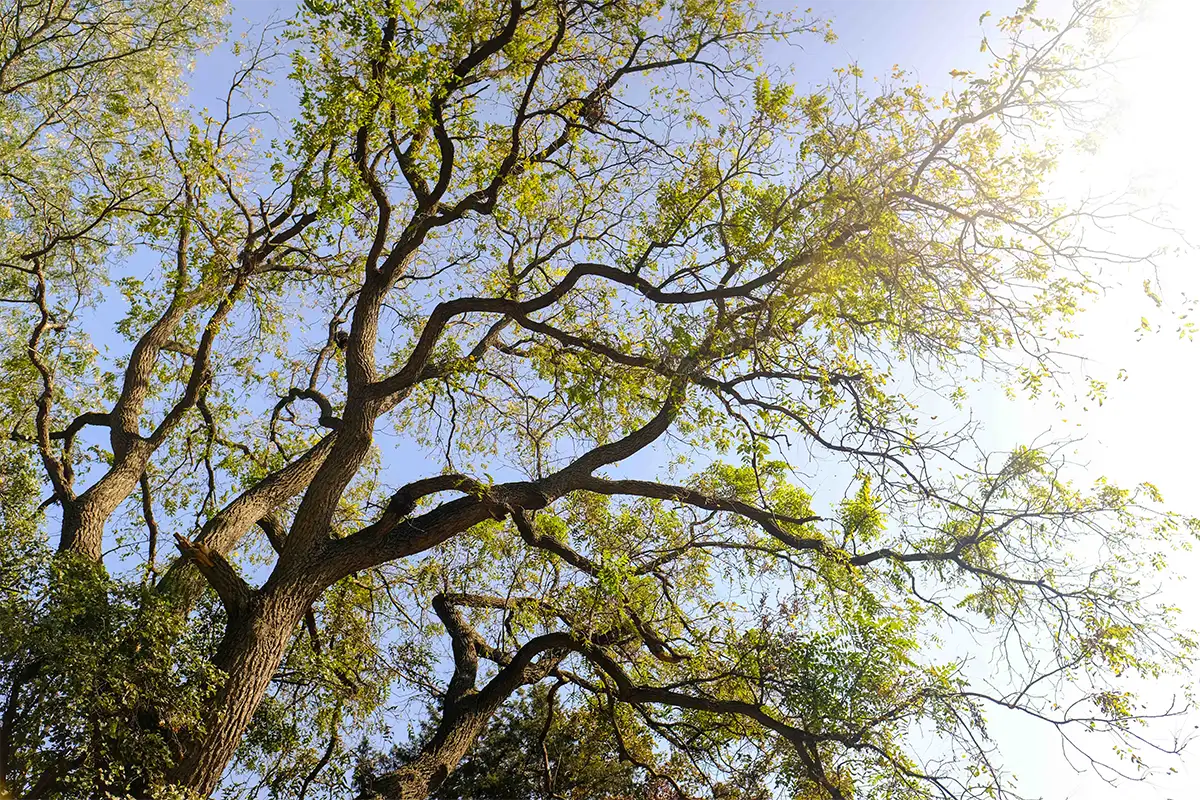Do you have a Black Walnut tree in your yard? Black walnuts are known for being tricky to plant under—but fear not, many native plants are used to sharing space with Black Walnuts and are a good pick for your garden.
Black Walnuts Have a Rap for Being Bad Neighbors
Black walnuts produce a chemical called juglone, which is present in all parts of the tree, including the roots, leaves, and nuts. When nut hulls, leaves, and stems fall to the ground, they leach juglone into the soil under and around the tree. Other trees in the Walnut family (Juglandaceae), like shagbark hickory, pecan, and English walnut, also produce juglone but in much lower concentrations.
Because of these chemicals, certain plants won’t fare so well under or next to a black walnut tree. In fact, black walnuts are said to be “allelopathic” to their neighbors—a relationship in which one plant inhibits the growth of another plant by releasing toxins. Know that vegetables in the nightshade family (like tomatoes, peppers, potatoes and eggplants), many annual flowers, and some trees and shrubs won’t do well with black walnut as their neighbor. Plant these kinds of vegetables and flowers away from your black walnut tree and out of its root zone. Also, keep these garden beds free of walnut leaves, twigs, and hulls.
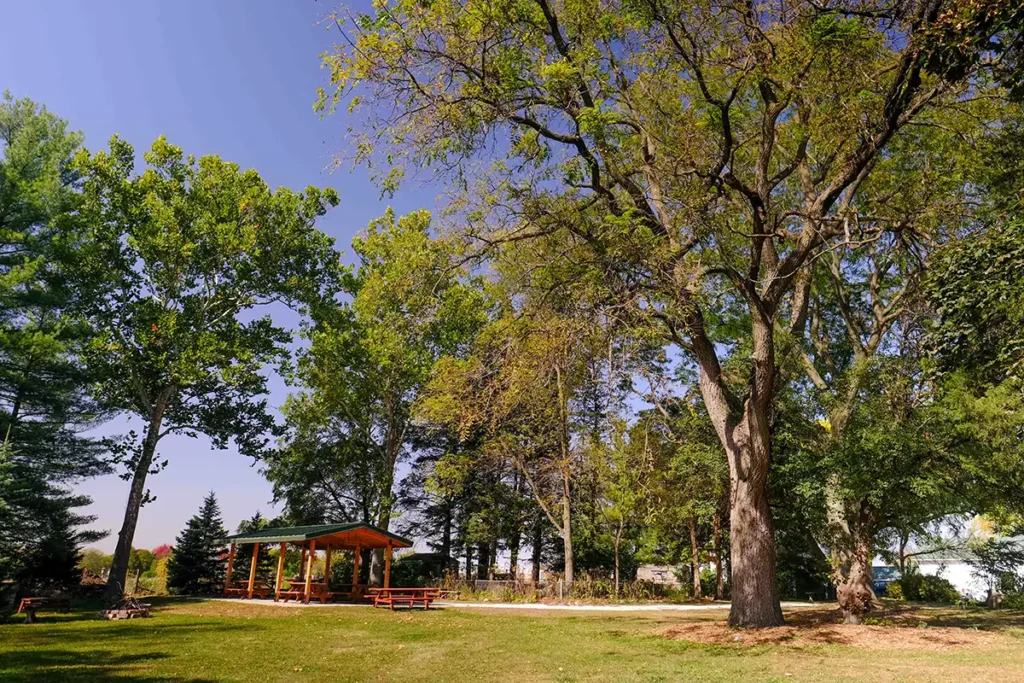
The Best Native Plants to Grow Near Black Walnut Trees
Fortunately, there are many native plants that share a habitat with black walnut trees and are adapted to tolerate juglone. Consider planting the following 10 native plants near your black walnut tree:
1. Wild Ginger
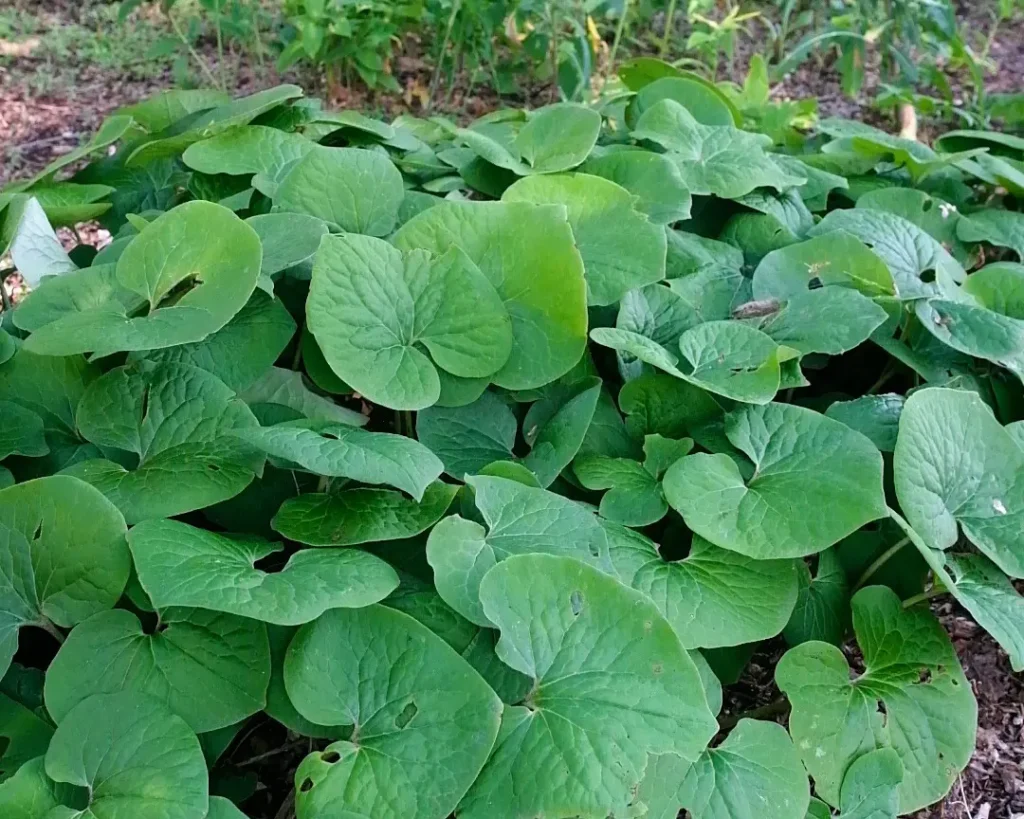
Asarum canadense
Wild ginger makes a great native groundcover, especially under trees like black walnut.
2 Virginia Bluebells
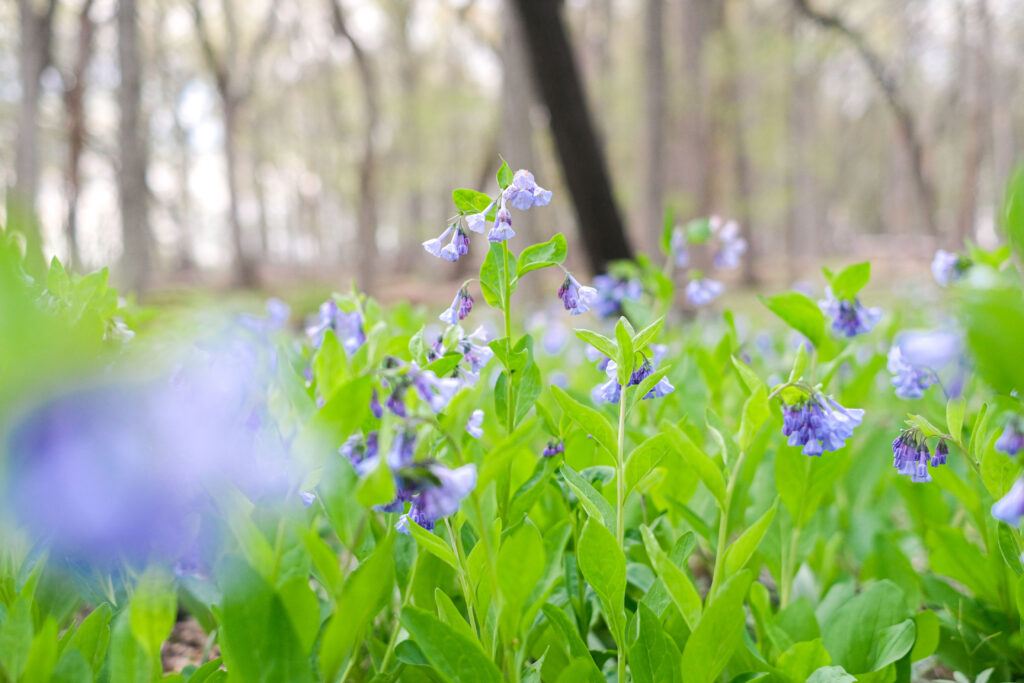
Mertensia virginica
Enjoy nodding clusters of blue flowers under your black walnut. Virginia Bluebells fade away after spring, so consider interplanting with later blooming flowers or plants with long-lasting foliage.
3. Mayapple
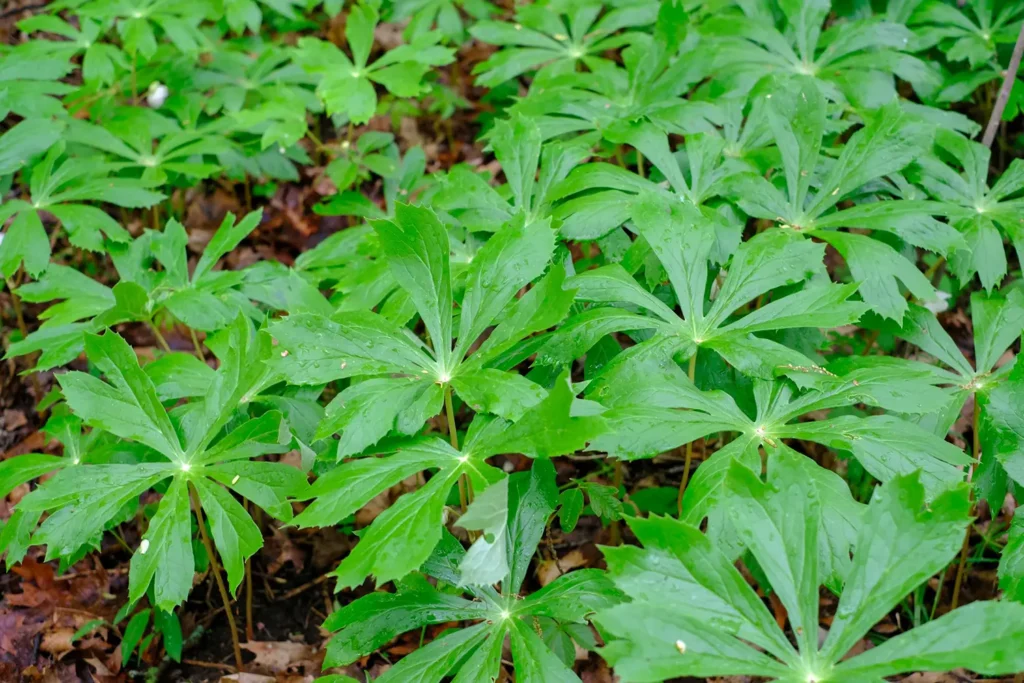
Podophyllum peltatum
Mayapples are umbrella-like spring ephemerals that can grow into dense colonies in the woodlands.
4. Blue Flag Iris
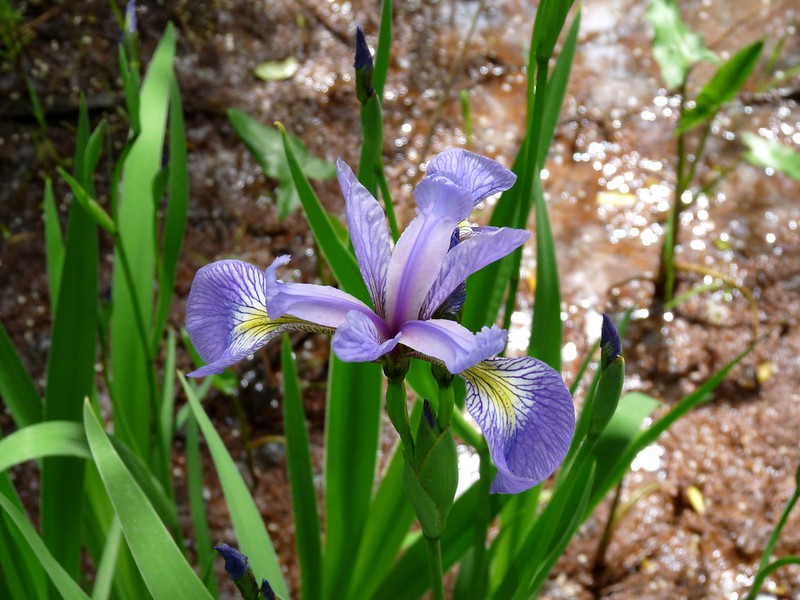
Iris versicolor
If your black walnut tree is planted in a wet area or near a pond, blue flag iris can be a great choice.
5. Jack-in-the-Pulpit

Arisaema triphyllum
Add a touch of whimsy to your spring garden with Jack-in-the-Pulpit. Mature plants produce clusters of bright red berries in the fall.
6. Pennsylvania Sedge
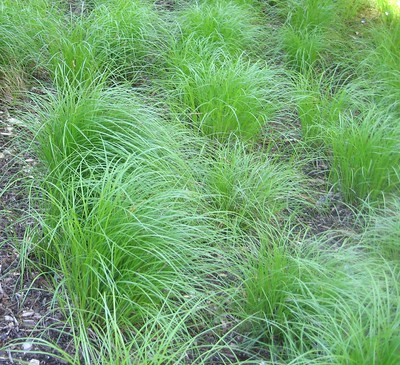
Carex pensylvanica
Tufts of sedges look lovely under trees. Look closely for its flower clusters in the spring.
7. Wild Geranium

Geranium maculatum
Wild geraniums can be grown as a groundcover with attractive pink-purple flowers. Wild geraniums bloom in late spring.
8. Great Blue Lobelia
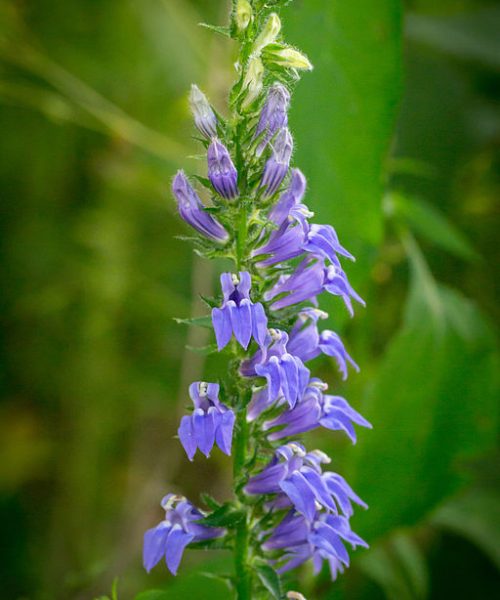
Lobelia siphilitica
Spike-like racemes of blue-purple flowers make great blue lobelia a unique and showy native flower. Great blue lobelia blooms in late summer or fall.
9. Ostrich Fern
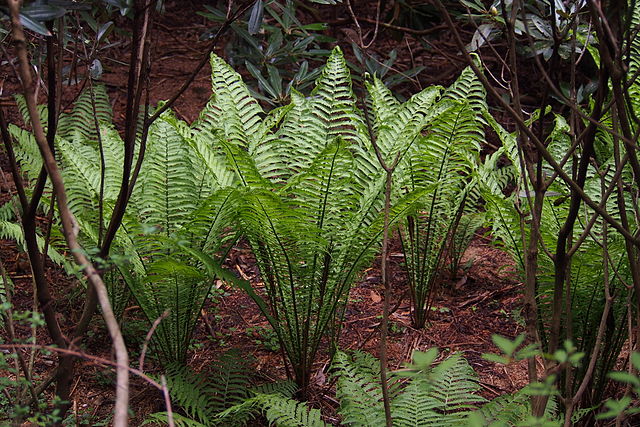
Matteuccia struthiopteris
Add lushness to your understory with ostrich ferns and other native ferns.
10. New England Aster
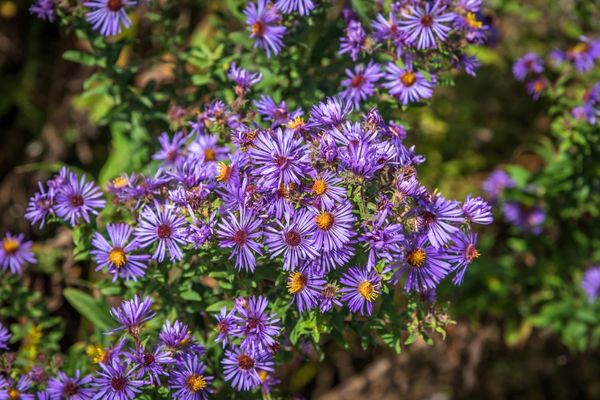
Symphyotrichum novae-angliae
Many asters are juglone-tolerant. Add a pop of purple in the fall with New England aster.
Pick the Right Plant Companions for Your Black Walnut Tree
A successful native plant garden starts with finding the right plant for the conditions of your garden site. Choose native plants, like those listed above, that naturally share a habitat with black walnuts and are tolerant to juglone. Consider a combination of native flowers with different bloom times so you’ll have color and feed pollinators from spring to fall.
For more information on black walnut toxicity and juglone-tolerant plant recommendations, check out these resources from The Morton Arboretum and Prairie Moon Nursery.
Conservation@Home is a program for homeowners who are helping local nature by gardening with native plants, creating wildlife habitat, conserving water, and more. Homeowners who make these earth-friendly choices are certified as a Conservation@Home property and rewarded with a Conservation@Home sign to post in their yard.
If you’re just getting started with your native plant garden, we can help recommend plants suited to your property and connect you with professional resources.

